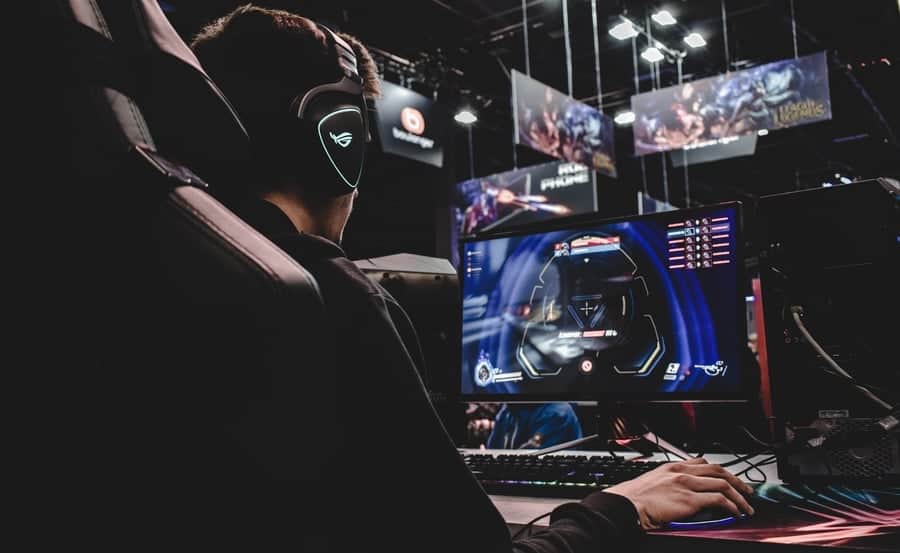When searching for a gaming monitor, you essentially have three options: Twisted Nematic (TN), In-plane Switching (IPS), and Vertical Alignment (VA). Of these monitors, IPS has increasingly become the gold standard for gaming, but when you compare them next to a VA or even a TN monitor, particularly their price tags, many gamers get understandably hesitant and question if IPS gaming monitors are really worth it.
IPS gaming monitors might be the most expensive monitor option on the gaming market, but they are absolutely worth the investment, especially if you optimize color reproduction, contrast, and viewing angles for stunning in-game visuals. While this monitor does have its cons, the pros vastly outweigh them.
This article will discuss why it is recommended you opt for an IPS gaming monitor over any other type. We’ll list the pros of these monitors that allow them to provide a superior gaming experience, but we’ll also briefly discuss some of their cons so you’re aware of why some people might not have an IPS in their gaming rig.
Benefits of Owning an IPS Gaming Monitor

While TN, VA, and IPS all have their pros and cons as gaming monitors, IPS excels in nearly every category.
The most significant benefits of opting for an IPS gaming monitor is their:
- Color reproduction and contrast abilities
- Viewing angle accuracy, particularly in ultrawide
- Refresh rates
- Longevity
Of these benefits, the one most people praise the highest is the IPS’ color accuracy and consistency. If you were to place an IPS next to a TN and VA monitor and display the exact same picture, you’d quickly see that the IPS displays a richer image with far more contrast and vibrancy. This is why IPS monitors are also favored by professional artists using advanced programs that rely on color accuracy.
Another benefit you’ll notice when placing these screens side-by-side-by-side is that if you were to move the image and view it from different angles, the colors wouldn’t shift significantly on the IPS the way they will on the other two monitors.
These monitors have also increasingly improved their refresh rates, with most providing 165Hz, which is slightly above the standard 144 Hz recommended for gaming, except for newer ultrawide models now providing 200 Hz.
The final benefit we want to touch on for IPS gaming monitors is their longevity. We’ll discuss the con of their cost in a moment, but when you decide to invest in an IPS gaming monitor, keep in mind that these monitors are the best long-term investment you can make. In terms of lifespan, their known to last significantly longer than TN panels and even Vas, making it easier to justify the cost.
Best IPS Gaming Monitors

If these positives are enough to convince you to get an IPS gaming monitor of your own, here are some of our top recommendations:
- Gigabyte G27F: Best option on a budget
- AORUS CV27Q: Best option for 1440p gaming
- Alienware 25 AW2521HF: Best option for 240Hz gaming
- ASUS ROG Swift: Best value for mid-range gaming
- Acer Predator X38: Best option for widescreen gaming
- LG 38GL950G: Best option for ultrawide monitor gaming
Which monitor is best for you will depend significantly on what you prioritize in your gaming experience, your budget, and the equipment you’re pairing it with.
Cons of Owning an IPS Gaming Monitor
Although we’d love to do nothing more than sing the IPS monitor’s praises, it would be unrealistic to say that these monitors don’t have any downsides. In fact, there are some significant reasons why gamers will opt for one of the other options, typically a TN, instead.
The most significant cons of IPS gaming monitors are their above-average cost and relatively poor response time compared to TN monitors.
Let’s start with the cost. There’s no question that IPS gaming monitors are expensive. While most gaming monitors aren’t exactly cheap, a decent IPS gaming monitor of substantial size is almost always more expensive than a TN or VA monitor with comparable specs.
For some, this increased up-front cost is worth the monitor’s exceptional visuals and longevity. However, the budget gamer rarely opts for an IPS monitor, especially over a VA monitor that is typically much cheaper and has better response times than both the VA and IPS monitors combined.
Response time is crucial for gamers, especially once you start moving up to professional levels and online competitions. IPS monitors might look pretty, but those visuals won’t do gamers much good if the monitor can’t keep up due to its lackluster response time. There’s nothing worse than investing hundreds of dollars into a new monitor that has you lagging all over the map.
This isn’t to say that IPS gaming monitors have abysmal response time; it’s just that TN monitors are better and cost much less, which is why they’re also a favored choice.
Final Thoughts

Overall, IPS gaming monitors are a fantastic choice for your gaming experience. The only gamers we might not recommend them to are those who truly can’t afford a pricy monitor or highly competitive gamers who need the best response times to give them an edge during online games and competitions. If cost isn’t as much of an issue and you value seeing every detail of a gamer’s visual brilliance, then an IPS gaming monitor is definitely for you.
Sources:
https://www.viewsonic.com/library/photography/what-is-an-ips-monitor-panel/
https://www.pcgamer.com/tn-vs-ips-panel-gaming-monitor/
https://nauticomp.com/what-are-some-pros-and-cons-of-ips-displays/
https://www.youtube.com/watch?v=xxZ6aTvcBw0
https://www.tomshardware.com/reviews/best-gaming-monitors,4533.html
https://levvvel.com/best-ips-monitor/
